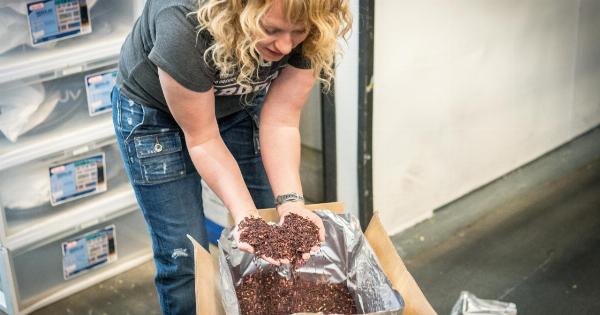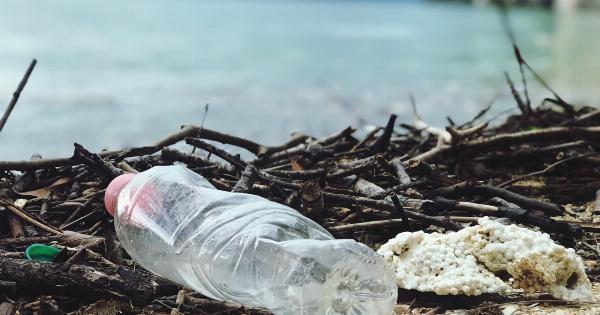Coffee is one of the most popular beverages in the world, enjoyed by millions of people every day. However, recent studies have revealed a shocking truth about this beloved drink – it may contain microplastics.
These tiny particles, measuring less than 5mm in size, pose a significant threat to both human health and the environment. In this article, we will delve into the details of this concerning issue and explore the potential risks associated with microplastics in coffee.
What are Microplastics?
Microplastics are small plastic particles that are either intentionally manufactured at small sizes or are derived from the breaking down of larger plastic items.
These particles can be found in various forms, such as microbeads in cosmetics, fibers from clothing, or fragments from larger plastic debris. They are so tiny that they can easily enter the human body through ingestion or inhalation.
How Do Microplastics End Up in Coffee?
The presence of microplastics in coffee is primarily attributed to two main factors – the packaging materials used and the brewing process.
Many coffee brands use plastic packaging, such as polyethylene terephthalate (PET) or polypropylene, which can release microscopic plastic particles into the beverage over time. Additionally, during the brewing process, hot water can cause the extraction of microplastics from the coffee machine’s components, such as the capsules or filters.
The Health Risks Associated with Microplastics Consumption
Consuming microplastics can have several detrimental effects on human health. These tiny particles can accumulate in the organs and tissues, leading to long-term health issues.
Studies have suggested that microplastics may interfere with the body’s endocrine system, disrupt hormone regulation, and potentially contribute to the development of various diseases, including cancer.
Furthermore, the size of microplastics enables them to easily pass through the gastrointestinal tract and enter the bloodstream. Once in the bloodstream, they can reach different organs, potentially causing inflammation and triggering immune responses.
The long-term effects of this constant exposure to microplastics are still relatively unknown, but the potential risks are certainly cause for concern.
The Environmental Impact of Microplastics
In addition to the risks they pose to human health, microplastics in coffee also have a significant environmental impact. Plastic pollution, including microplastics, has become a major global concern.
These particles are widespread in oceans, rivers, and even the air we breathe. Marine life can mistake microplastics for food, leading to internal injuries, starvation, and death.
Furthermore, the process of producing plastic, including the extraction of raw materials and manufacturing, contributes to greenhouse gas emissions and the depletion of natural resources.
The disposal of plastic waste also presents challenges, as plastic takes hundreds of years to degrade. Therefore, the presence of microplastics in coffee exacerbates the larger issue of plastic pollution and its detrimental effects on ecosystems and biodiversity.
Regulations and Research
Although awareness of microplastics in various consumer products has increased in recent years, little attention has been given to microplastics in coffee.
Regulatory bodies, such as the Food and Drug Administration (FDA) and the European Food Safety Authority (EFSA), have yet to establish specific guidelines or safety limits for microplastics in food and beverages.
There is an urgent need for further research to better understand the extent of microplastic contamination in coffee, its sources, and potential mitigation strategies.
Existing studies have primarily focused on the presence of microplastics in water, seafood, and other food products, leaving significant knowledge gaps concerning coffee. Consequently, consumers remain largely unaware of the potential risks associated with microplastics in their daily cup of joe.
Minimizing Exposure to Microplastics in Coffee
While the complete elimination of microplastics from coffee may not be currently feasible, there are steps consumers can take to minimize their exposure to these particles:.
- Choose coffee brands that prioritize sustainable and eco-friendly packaging materials, such as aluminum or compostable materials.
- Opt for coffee made from freshly ground beans instead of single-use capsules or pods, as these can potentially release more microplastics.
- Consider using coffee machines with metal or reusable filters, as these are less likely to contribute to microplastic contamination compared to disposable paper filters.
- Support initiatives that aim to reduce plastic pollution and promote the use of biodegradable packaging in the coffee industry.
By making more conscious choices and demanding greater transparency from coffee manufacturers, consumers can play a vital role in driving change and encouraging the adoption of more sustainable practices.
The Way Ahead
As our understanding of the impacts of microplastics in coffee grows, it is crucial for both regulatory bodies and the coffee industry to take immediate action.
This includes establishing guidelines and safety limits for microplastics in coffee, investing in research to assess potential health risks, and developing innovative packaging solutions that minimize the release of microplastic particles.
Furthermore, consumer awareness and education are paramount, enabling individuals to make informed choices and demand greater accountability from coffee producers.
Efforts must also extend to broader initiatives addressing plastic pollution and promoting sustainable practices throughout the entire supply chain.
Conclusion
The presence of microplastics in coffee is a concerning reality that demands attention from consumers, industry leaders, and regulatory bodies.
While more research is needed to fully understand the extent of the issue and its potential risks, taking proactive steps to reduce our exposure to microplastics and advocating for the adoption of sustainable practices can help mitigate the problem. It is time to wake up and recognize the shocking truth about microplastics in our morning cup of coffee before it’s too late.






























